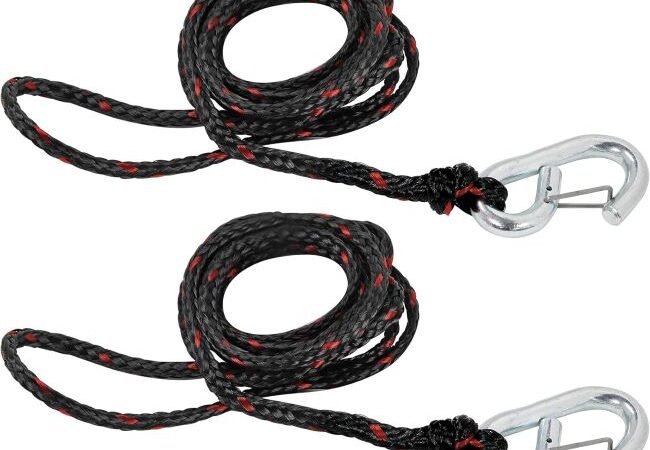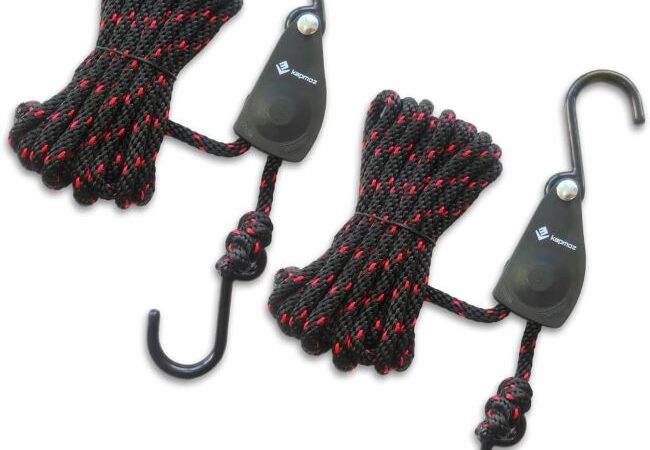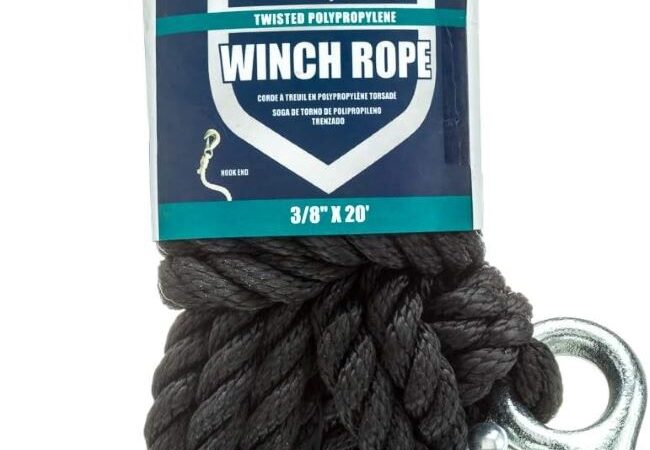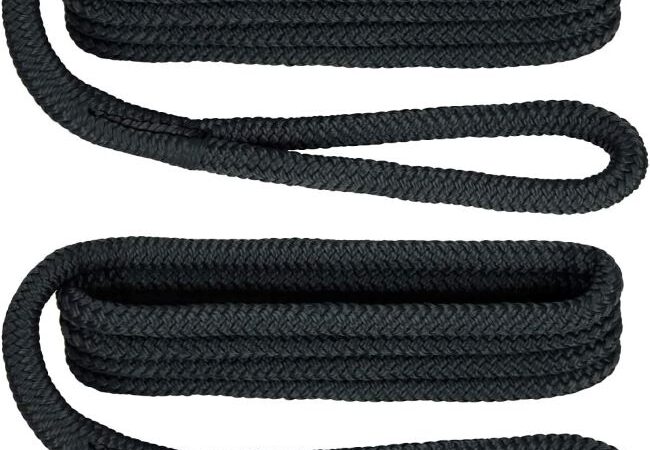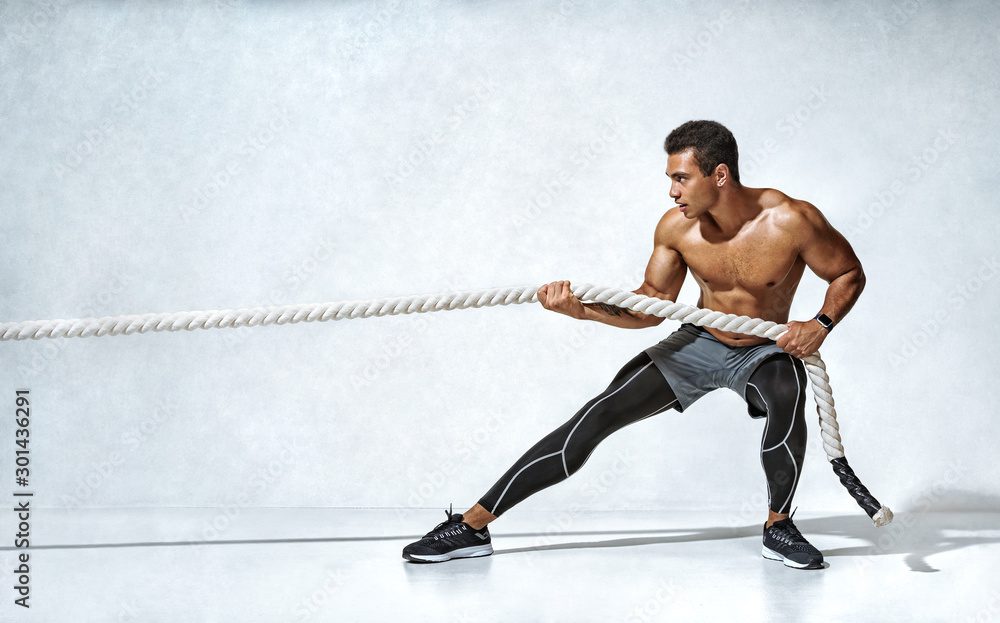
Strongest Rope for Pulling: Unbreakable Bonds
Ultra-high-molecular-weight polyethylene (UHMWPE) ropes are the strongest for pulling tasks. These synthetic fibers offer exceptional strength-to-weight ratios.
Contents at a Glance
ToggleSelecting the right rope for pulling and towing is crucial, whether you’re involved in heavy-duty industrial work or need a reliable line for your outdoor adventures. UHMWPE ropes, known for their incredible tensile strength, have revolutionized the rope-making industry. They are lightweight yet boast superior strength, outperforming traditional materials like steel wire in many applications.
Durability and resistance to environmental factors like UV rays and chemicals make them an excellent choice for any pulling job. Their minimal stretch and high abrasion resistance ensure consistent performance and longevity. Safety is paramount, and these ropes deliver, providing peace of mind for those who require the most reliable equipment in their operations.
Introduction To High-tensile Ropes
High-tensile ropes are critical in activities demanding strength and durability. These ropes are designed to handle heavy loads and resist breaking. Made from materials like nylon, polyester, and Kevlar, high-tensile ropes offer superior performance.
The Importance Of Rope Strength
The strength of a rope is crucial for safety and efficiency. Strong ropes mean less risk of failure under strain. They ensure that tasks are completed without unexpected breaks, which could lead to accidents or damage. Choosing a rope with the right strength is essential for any job.
- Maximized safety in operations
- Increased lifespan of the rope
- Cost-effectiveness by reducing replacements
Applications Of Strong Ropes
High-tensile ropes have a wide range of uses. They can be found in industries like marine, construction, and sports. Here are some common applications:
| Industry | Use Case |
|---|---|
| Marine | Mooring lines, towing, and lifting |
| Construction | Heavy lifting and securing loads |
| Adventure Sports | Climbing, rappelling, and rescue operations |
In each case, the rope’s strength ensures tasks are done effectively and safely.
Materials That Make The Difference
When it comes to pulling heavy loads, the strength of a rope is vital. A good rope can mean the difference between success and failure. The materials used to make the rope are key to its performance. Let’s dive into what materials make the strongest ropes for pulling.
Natural Vs. Synthetic Fibers
Ropes come in two main types of materials: natural and synthetic fibers. Each has its own benefits.
- Natural fibers like manila, sisal, and cotton are eco-friendly. They offer a classic look and feel.
- Synthetic fibers, such as nylon, polyester, and polypropylene, are stronger. They resist water, chemicals, and wear better than natural fibers.
Nylon ropes are especially popular for their elasticity and strength. They can stretch and absorb shocks. This is great for towing and pulling tasks.
Innovations In Rope Materials
Recent innovations have led to even stronger ropes. These new materials push the boundaries of what ropes can do.
| Material | Features | Benefits |
|---|---|---|
| Dyneema® | Ultra-high molecular weight polyethylene | Lightweight, floats on water, extremely strong |
| Spectra® | High-performance polyethylene | High strength, low stretch, durable |
| Technora® | Aramid fiber | Heat resistance, great strength-to-weight ratio |
Dyneema® and Spectra® are standout materials. They are often used in industries that require the best performance.
Breaking Down Tensile Strength
Understanding the strength of a rope is crucial for safe and effective pulling tasks. The key measure of this strength is known as tensile strength. It tells us the maximum load a rope can handle before it breaks. Let’s delve into the world of ropes and unravel the mystery behind tensile strength.
Measuring Tensile Strength
To determine the tensile strength of a rope, we perform a test that stretches the rope until it snaps. The highest force applied during the test is the tensile strength. This number is often measured in pounds (lbs) or kilonewtons (kN).
- Ropes are clamped on both ends.
- Force is applied gradually.
- Measurement devices record the peak force.
Factors Affecting Rope Durability
Rope durability depends on several factors. All these contribute to how long a rope can last and how well it can maintain its tensile strength over time.
| Factor | Impact on Durability |
|---|---|
| Material | Synthetics like nylon and polyester offer high strength and durability. |
| Weave | A tighter weave means less wear and better load distribution. |
| Diameter | Thicker ropes generally have higher tensile strength. |
| UV Exposure | UV rays can weaken the rope fibers over time. |
| Chemical Exposure | Some chemicals can degrade ropes, reducing their lifespan. |
| Abrasion | Frequent rubbing can fray ropes and lower their strength. |
| Moisture | Wet conditions can affect certain materials, leading to rot or mildew. |
Choose the right rope with a high tensile strength for pulling tasks. Consider all the factors that influence durability to ensure safety and longevity.

Credit: m.youtube.com
The Science Of Rope Making
The Science of Rope Making involves intricate processes to ensure strength and durability. Understanding these techniques helps in selecting the best rope for heavy-duty tasks like pulling.
Weaving Techniques For Maximum Strength
Weaving plays a crucial role in rope strength. Fibers interlock in specific patterns to enhance load-bearing capabilities. Here are common weaving styles:
- Twisted: Fibers twist together forming spirals.
- Braided: Fibers weave in over-and-under patterns for less stretch.
- Kernmantle: A core supports loads with a protective sheath.
These methods distribute stress evenly, preventing breakage under tension.
Coating And Treatment For Durability
Ropes undergo special treatments to resist wear and tear. Here’s how:
| Treatment Type | Benefits |
|---|---|
| Waterproofing | Prevents water absorption, reduces weight. |
| UV Protection | Shields from sun damage, extends life. |
| Abrasion Resistance | Wards off surface wear from rough surfaces. |
These coatings ensure ropes perform well in harsh conditions.
Top Contenders For Strongest Rope
Choosing the right rope for heavy-duty pulling tasks matters. Strength, durability, and safety are key. Various materials boast these features, but some stand out. Let’s explore top performers in the rope world.
Nylon Ropes: Pros And Cons
Nylon ropes are popular for their strength and elasticity. These ropes stretch under load, which is both an advantage and a drawback.
- Pros:
- High tensile strength
- Absorbs shock well
- Resistant to abrasion
- Durable in dynamic loads
- Cons:
- Can stretch up to 15-20% before breaking
- Not ideal for static systems
- Weakens when wet
- Heavier than some alternatives
The Rise Of Ultra-high-molecular-weight Polyethylene (uhmwpe)
UHMWPE ropes are gaining ground. Their impressive attributes make them top contenders for the strongest rope.
- Exceptional tensile strength
- Lightweight
- Floats on water
- Highly resistant to abrasion
- Does not absorb water
- UV resistant
These ropes are ideal for demanding tasks. They outperform many others in strength-to-weight ratio. For critical applications, UHMWPE ropes are the go-to choice.
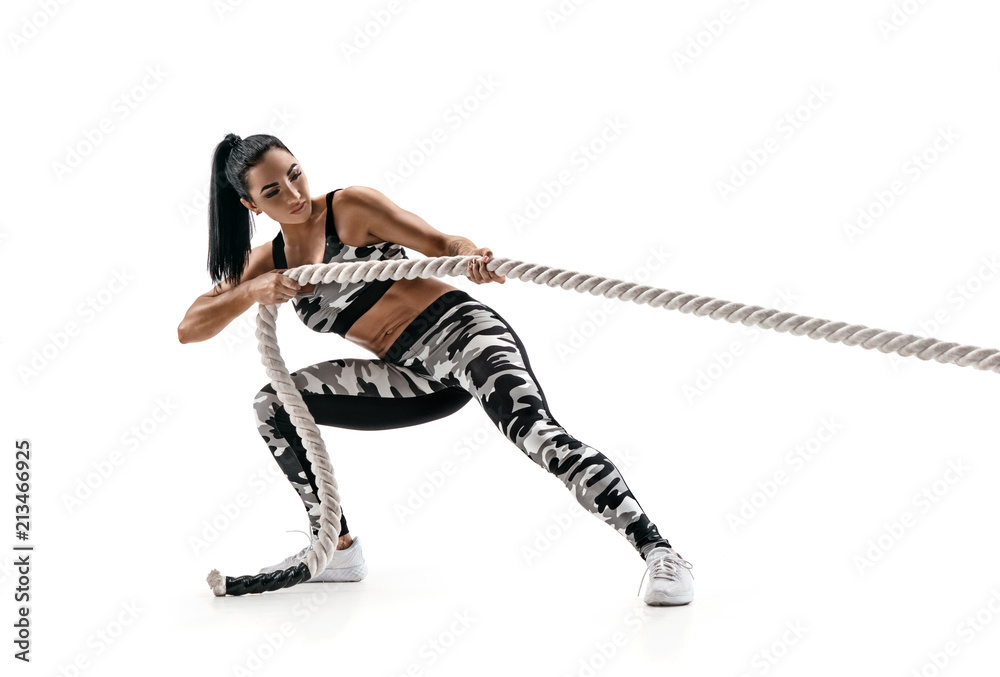
Credit: stock.adobe.com
Field Testing Rope Strength
Choosing the strongest rope for pulling requires more than reading specifications. It involves field testing under real conditions. This ensures the rope can handle the expected stress and load. Field testing replicates the exact scenarios where the rope will serve. It confirms the strength and durability advertised by manufacturers.
Real-world Applications
Rope strength is not just a number. It translates to safety and efficiency in various tasks. Industries rely on ropes for heavy-duty pulling, like towing vehicles and securing cargo. In the marine sector, ropes anchor ships against fierce tides. Climbers trust ropes with their lives during ascents. Field tests consider factors like abrasion resistance, flexibility, and knot security.
Case Studies: When Rope Strength Is Critical
Here are some instances where the strength of a rope is not just important, but critical:
- Emergency Services: Rescue operations use ropes to pull people from danger. The ropes must not fail.
- Construction: Ropes lift heavy materials to great heights. They must be reliable.
- Maritime Activities: Ropes secure boats and cargo at sea. Strong waves test these ropes.
Each case study reveals a situation where rope strength undergoes testing beyond the lab. Field tests provide real data on performance and safety. They show us that the strongest rope for pulling is one that passes the toughest of tests.
Maintenance And Care For Longevity
To ensure the longevity and performance of your rope, proper maintenance and care are crucial. This guide covers essential practices that will help keep your rope strong and reliable for pulling tasks.
Proper Storage Practices
Storing your rope correctly prevents damage and extends its life. Follow these tips:
- Keep it dry: Store your rope in a dry area to avoid mildew and rot.
- Avoid direct sunlight: UV rays can weaken the rope fibers.
- Hang it loosely: This prevents kinks and stress on the rope.
- Use a rope bag: A rope bag protects it from dirt and tangles.
Routine Inspection And Replacement
Regular checks are key to spotting potential issues early. Here’s what to do:
- Look for frays: Check for any signs of wear or broken fibers.
- Test for weakness: Pull on different sections to feel for differences in strength.
- Check after each use: Quick inspections can catch problems early.
- Replace if needed: Don’t hesitate to replace the rope if it shows significant damage.
Following these steps will help keep your rope in top condition for all your pulling needs.
Future Of Ropes: Advanced Technologies
The world of ropes is evolving. New technologies bring stronger, more durable ropes. These advancements promise to revolutionize industries from shipping to mountain climbing. Let’s explore what the future holds.
Emerging Materials
Scientists are creating ropes with materials once found only in science fiction. These materials offer unprecedented strength and versatility.
- Graphene: Incredibly thin yet immensely strong, this material is making its way into rope production.
- Nano-fibers: Tiny fibers with huge potential, they contribute to ropes that are both lightweight and powerful.
- Spectra: Known for its use in bulletproof vests, Spectra fiber is now also used to make ultra-strong ropes.
Predictions For Next-generation Ropes
What will the ropes of tomorrow look like? Experts predict changes that could make ropes safer and more reliable than ever.
| Feature | Benefit |
|---|---|
| Self-Healing: | Ropes repair themselves, extending their life. |
| Smart Technology: | Ropes communicate their condition, ensuring safety. |
| Biodegradable Options: | Ropes break down safely, protecting the environment. |
Imagine ropes that last longer and are eco-friendly. This is not a distant dream but a near possibility.

Credit: www.123rf.com
Frequently Asked Questions
What Is The Strongest Type Of Rope?
The strongest type of rope is typically made from ultra-high-molecular-weight polyethylene (UHMWPE), known for its high strength-to-weight ratio.
What Is The Strongest Rope For Pulling Trees?
The strongest rope for pulling trees is typically a polyester or double-braided nylon rope due to their high strength, durability, and stretch resistance.
What Is The Strongest Possible Rope?
The strongest ropes are typically made from ultra-high molecular weight polyethylene (UHMWPE). This material surpasses others in strength, durability, and lightweight properties, making it ideal for heavy-duty applications. Popular brands include Dyneema and Spectra.
Which Is Stronger, Nylon Or Polypropylene Rope?
Nylon rope is generally stronger than polypropylene rope, offering better stretch and abrasion resistance.
Conclusion
Choosing the right rope for pulling tasks is crucial for both safety and efficiency. Nylon ropes offer unparalleled strength and elasticity, making them top contenders. For heavy-duty needs, consider polyester for its durability and minimal stretch. Always assess the specific requirements of your task to select the most suitable rope.
Safe pulling!
{ “@context”: “https://schema.org”, “@type”: “FAQPage”, “mainEntity”: [ { “@type”: “Question”, “name”: “What is the strongest type of rope?”, “acceptedAnswer”: { “@type”: “Answer”, “text”: “The strongest type of rope is typically made from ultra-high-molecular-weight polyethylene (UHMWPE), known for its high strength-to-weight ratio.” } } , { “@type”: “Question”, “name”: “What is the strongest rope for pulling trees?”, “acceptedAnswer”: { “@type”: “Answer”, “text”: “The strongest rope for pulling trees is typically a polyester or double-braided nylon rope due to their high strength, durability, and stretch resistance.” } } , { “@type”: “Question”, “name”: “What is the strongest possible rope?”, “acceptedAnswer”: { “@type”: “Answer”, “text”: “The strongest ropes are typically made from ultra-high molecular weight polyethylene (UHMWPE). This material surpasses others in strength, durability, and lightweight properties, making it ideal for heavy-duty applications. Popular brands include Dyneema and Spectra.” } } , { “@type”: “Question”, “name”: “Which is stronger, nylon or polypropylene rope?”, “acceptedAnswer”: { “@type”: “Answer”, “text”: “Nylon rope is generally stronger than polypropylene rope, offering better stretch and abrasion resistance.” } } ] }

